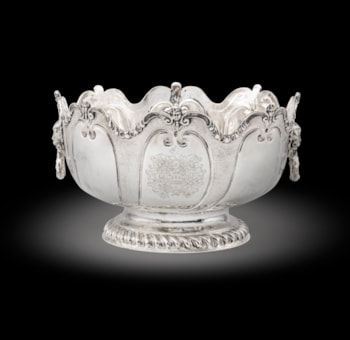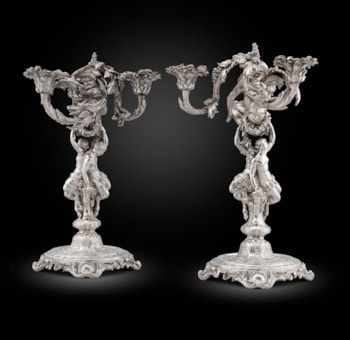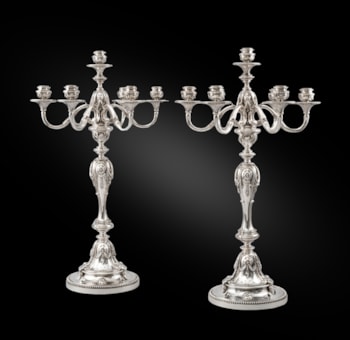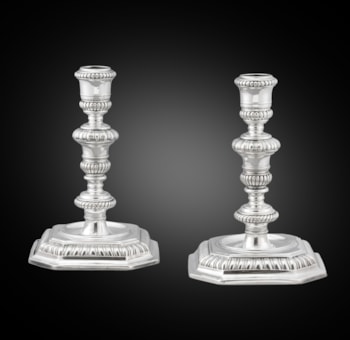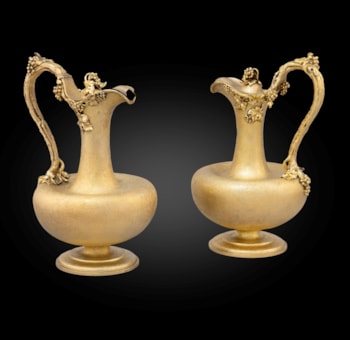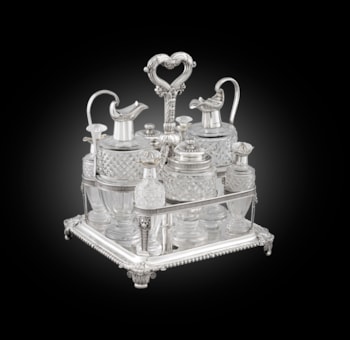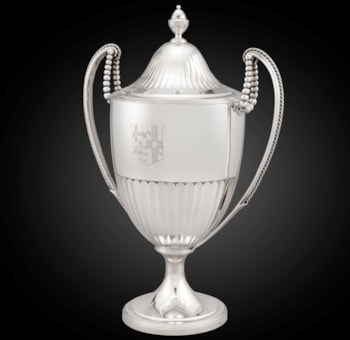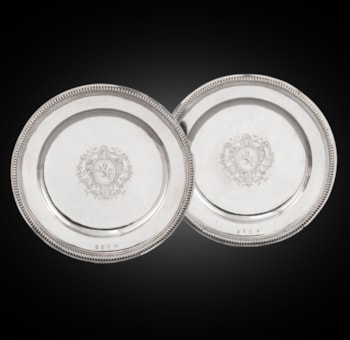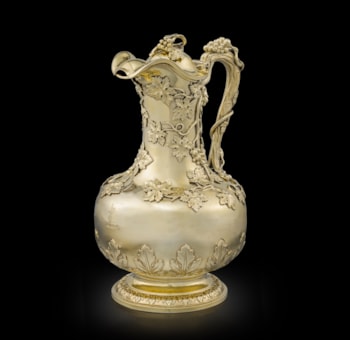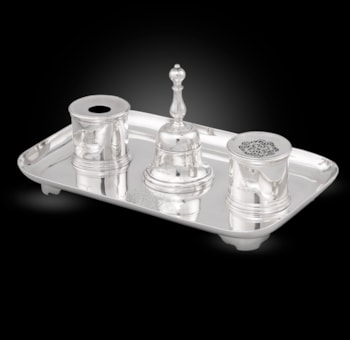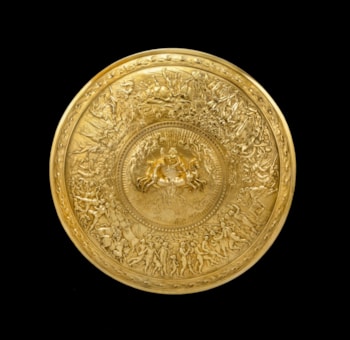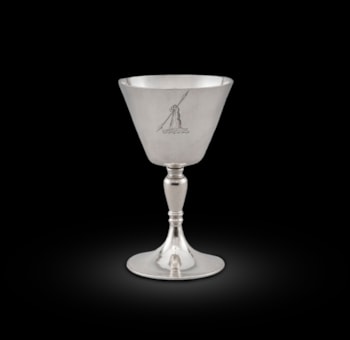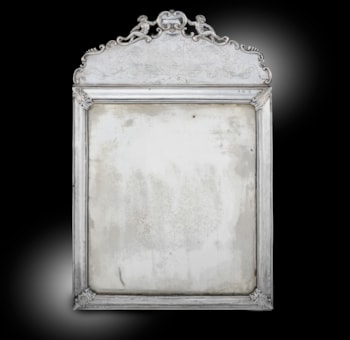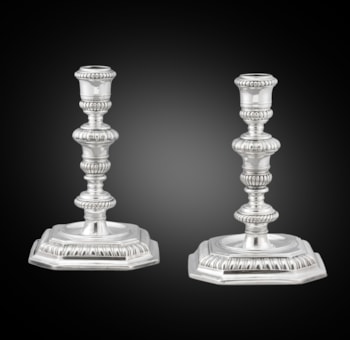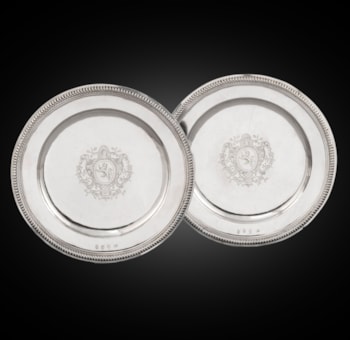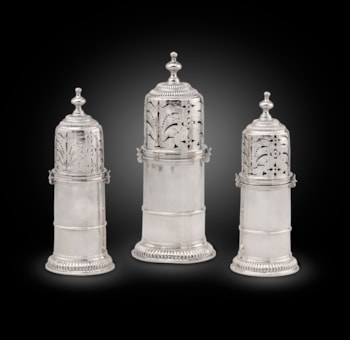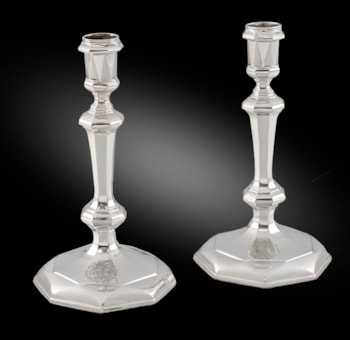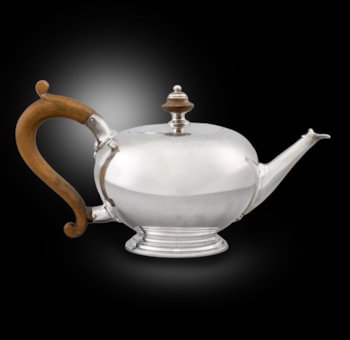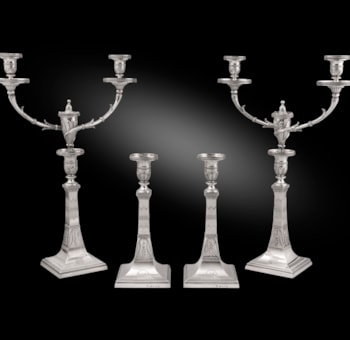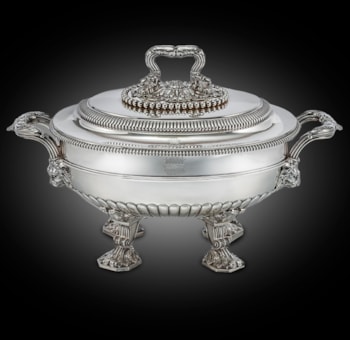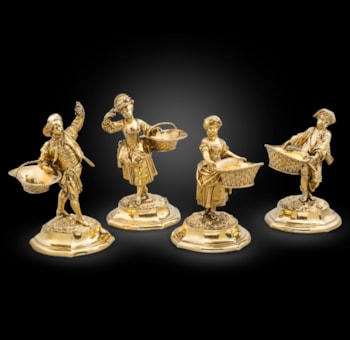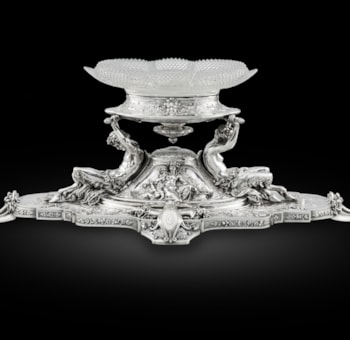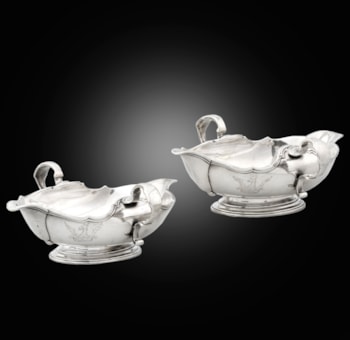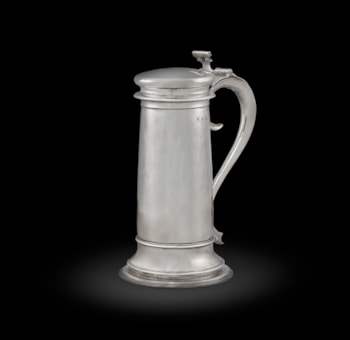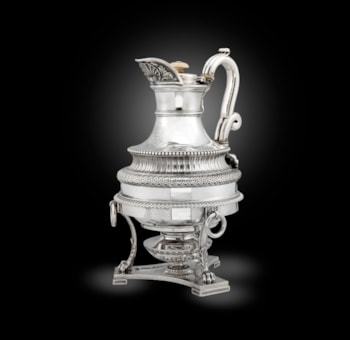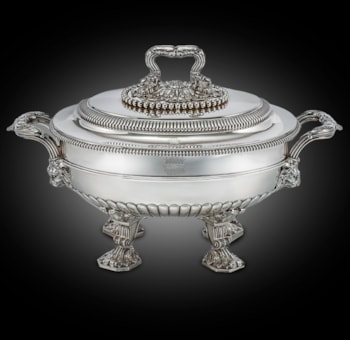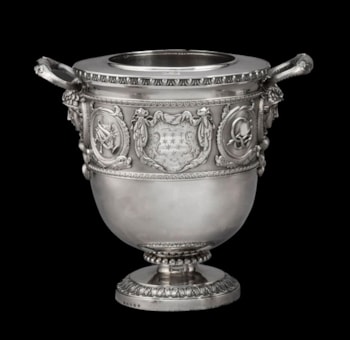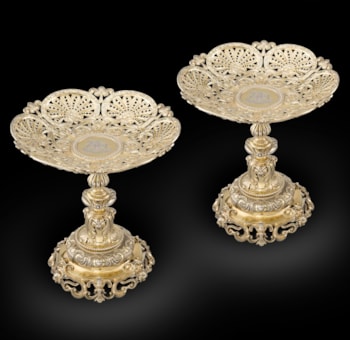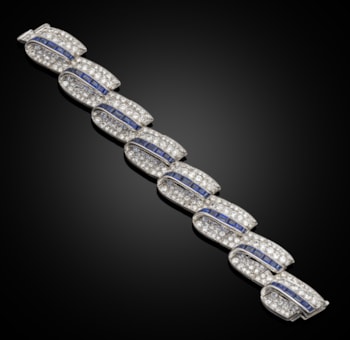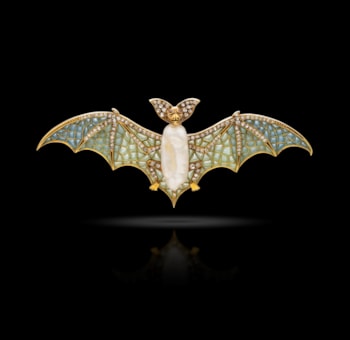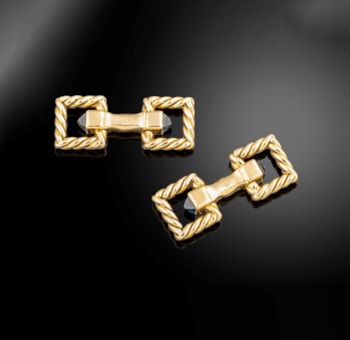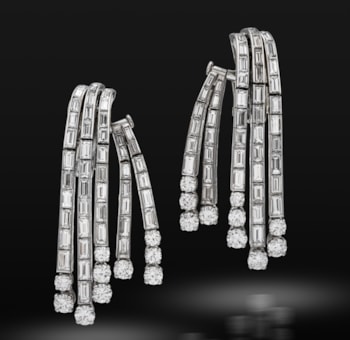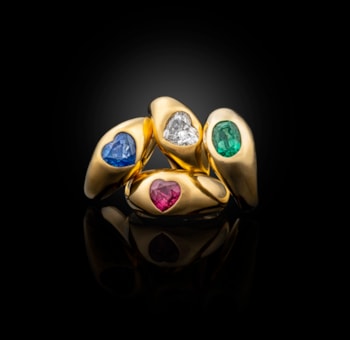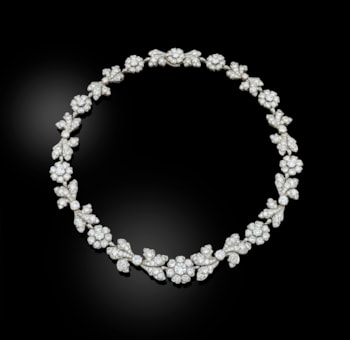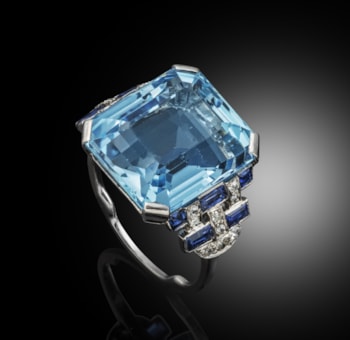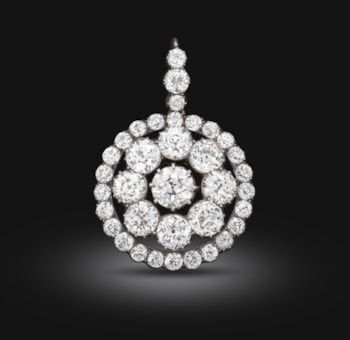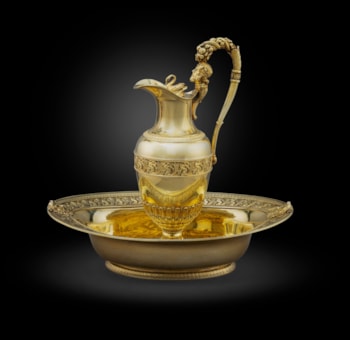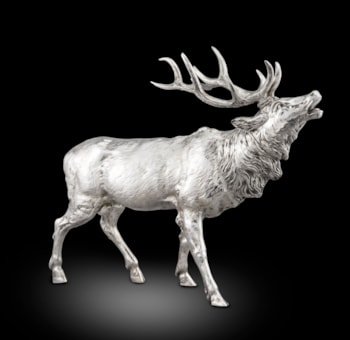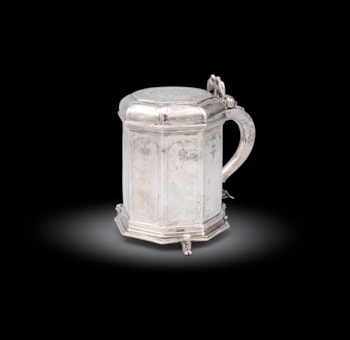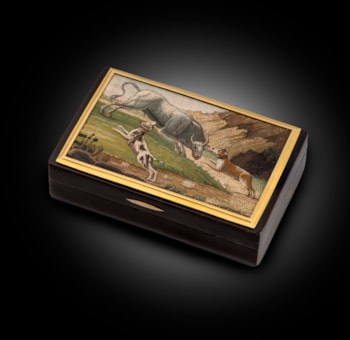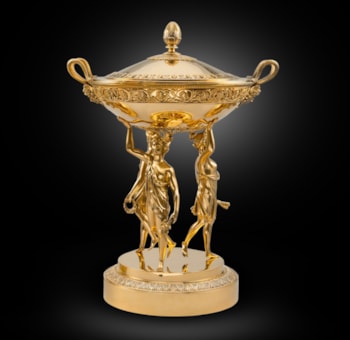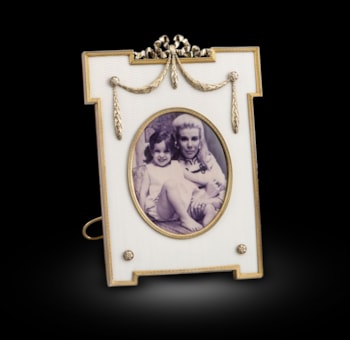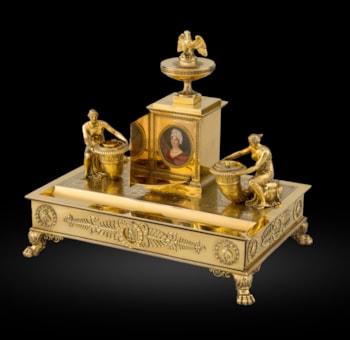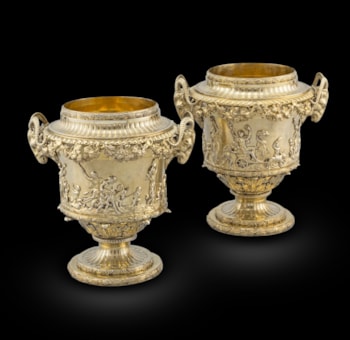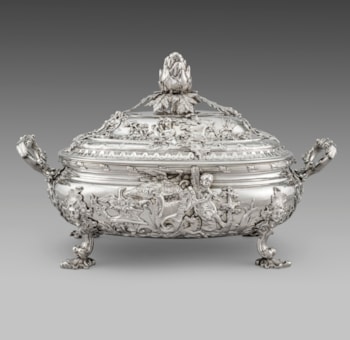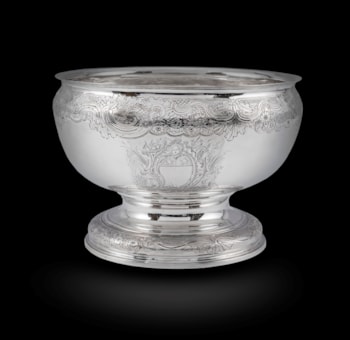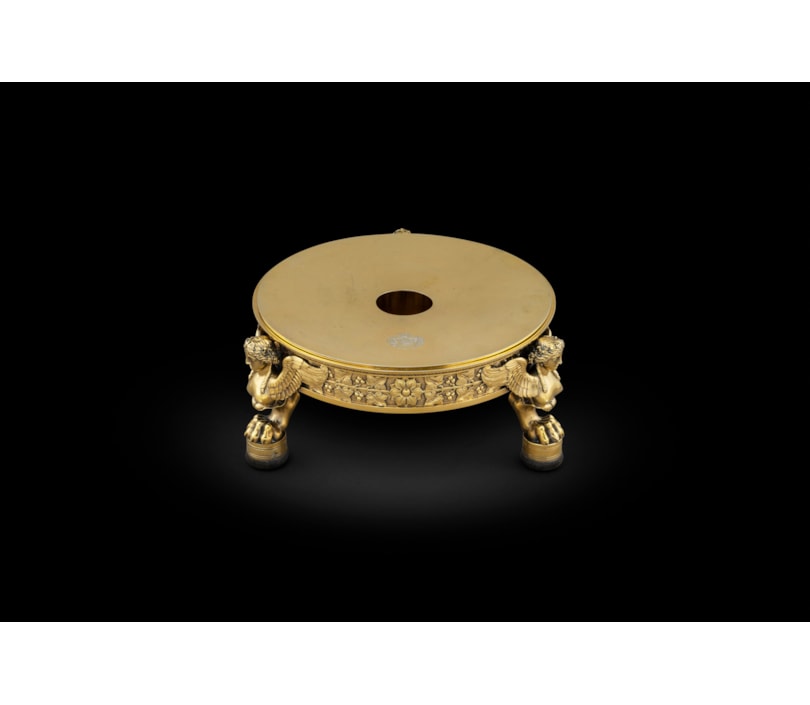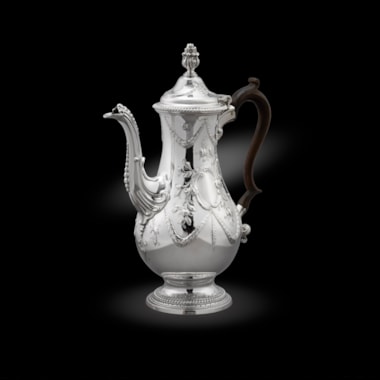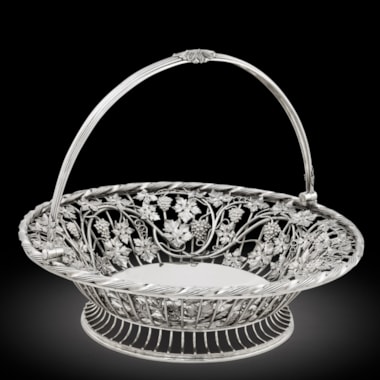
“ Madame Mère” by Gerrard Musée de Versailles ©RNM
This lampstand conforms to the extensive service which Napoleon's mother, Madame Mere, ordered trom Odiot in 1806 for use in the Hotel de Brienne, rue Ste. Dominique, which she had bought for FF600.000.
Born in Corsica, she married Carlo-Maria Bonaparte in 1764 and bore him thirteen children, eight of whom reached adulthood. As soon as Napoleon declared his intention to found a new dynasty, she began to carve an imperial niche for herself. No pension, no gift, no annuity was ever enough. In 1803, Napoleon granted her an annuity of FF120.000, three times as much as he had settled on his spendthrift sisters. The following May it was raised a further FF60.000, then augmented to FF300.000, then FF480.000 and finally in 1808 she was granted an annual pension of 1 million francs.
In her Hôtel in Paris and her Chateau du Pont, surrounded by priceless furniture, paintings and works of art, she and her court lived in retirement and the strictest domestic economy. Her parsimony annoyed Napoleon and became a source of gossip. Profoundly distrustful of The Empire, she claimed to have saved half her income annually and secreted her savings in foreign capitals, anticipating exile. When it came, she succeeded in supporting her family in the opulence they had come to expect. In August 1814 she joined the Emperor in exile on Elba and after his defeat at Waterloo, retired to Rome, where she died the year that Napoleon's Arc de Triomph was completed in Paris.
Sotheby's New York, 28 October 1987, lots 167-174 Christie's Geneva, 26 April 1977, lot 335 I and 335 J
Collection D. David Weill, Hôtel Drouot Paris, 4 May 1972, lot 62
JM Pinçon & O Gaube de Gers, Odiot l'orfeure, pp.116-117
The House of Odiot was founded in 1690 by Jean-Baptiste Gaspard Odiot. The House rose to prominence under the extremely talented Jean-Baptiste Claude, Jean Baptiste Gaspard’s grandson. He received many prestigious orders from the Emperor, including Napoleon’s coronation sword and sceptre and the Emperor’s campaign dinner service. Odiot was particularly influenced by the antique style and created lavish displays in silver-gilt. Odiot’s reputation spread beyond the Empire to all the courts of Europe.
You May Also Like




